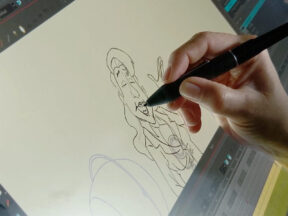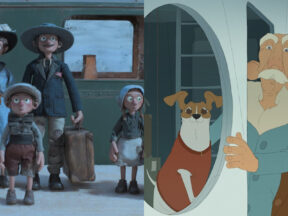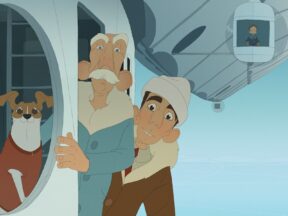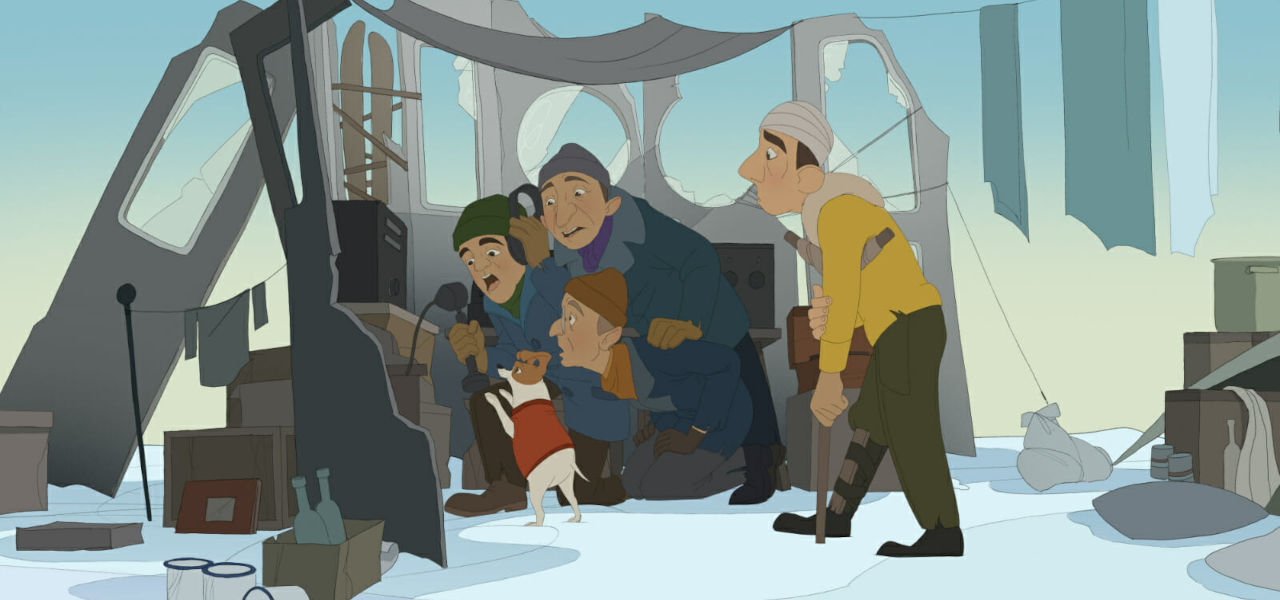
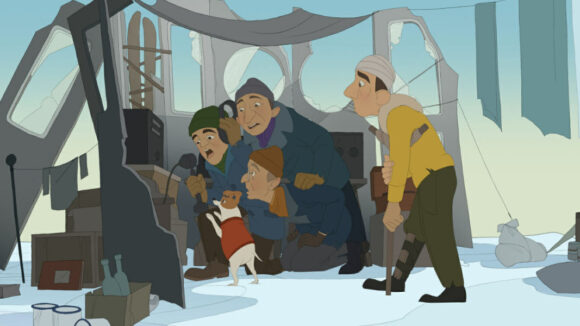
Tonje Skar Reiersen On The Epic Journey Behind ‘Titina’
Titina is an award-winning 2d animated feature film that tells a death-defying tale of Arctic exploration from a dog’s-eye view. Based on the thrilling story of polar explorer Roald Amundson and Italian engineer Umberto Nobile, Titina recounts a stylized version of their story by following a small dog who famously accompanied the explorers on their epic journey.
The film recently played at Annecy as part of the festival’s open air screenings and will be available to stream on The Animation Showcase on July 10. To celebrate the film’s upcoming online release and limited theatrical run, Toon Boom Animation interviewed Tonje Skar Reiersen, a producer behind the production. Tonje offers insights into how the story was brought to life, including how Toon Boom Harmony’s precise vector lines were used to create an aesthetic true to cartoons of the era.
Toon Boom: Why was it important to take a 2d approach on this feature film?
Tonje: Kajsa Næss (director) is a big fan of classic 2d animation. She finds it beautiful and very expressive. She wanted a style that reminded us of old-school cel animation with an aesthetic marked by thin lines, avoiding adding shadows or too much texture. Toon Boom Harmony was perfect for this with its precise vector lines.
It also suits the time period for the story we tell, which spans from 1926 to 1978. So this film was intended as hand drawn 2d from the start, and we stuck to that from beginning to end. The Belgian studios (Souza and Lunanime) and artists did a wonderful job bringing Kajsa’s vision to life.
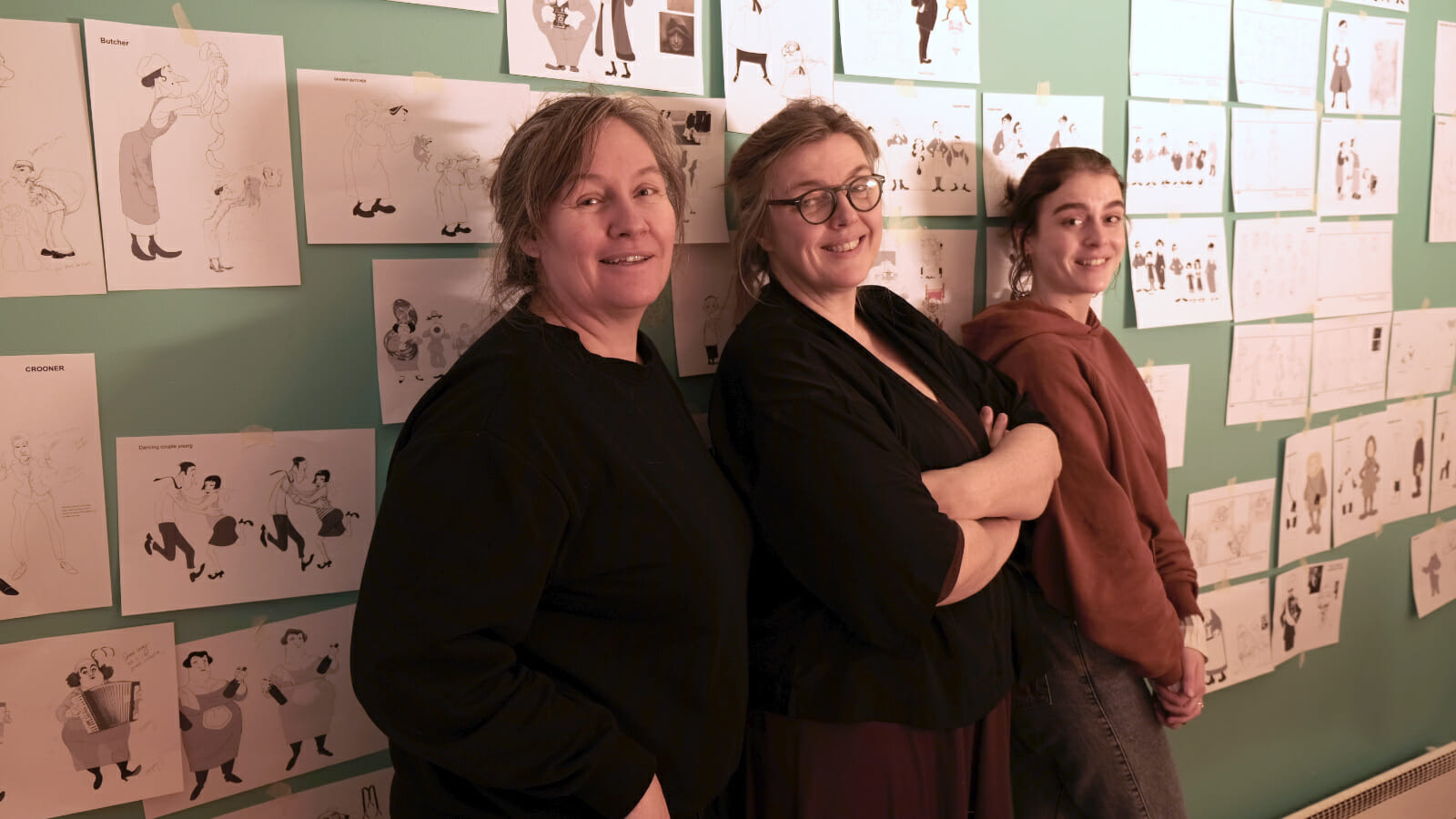
Are there any notable inspirations behind Titina’s charming visual style?
Tonje: Emma McCann (art director, production designer) is a big fan of art nouveau. For Titina, she especially looked at the Scottish architect and painter Charles Rennie Mackintosh for inspiration. The linework in the film is clearly drawn from his work.
With an airship engineer protagonist, there are some impressive aerial vehicular scenes, can you share how these were made?
Tonje: It was important to Kajsa to keep the production 2d. We had a 3d model of the airship that was used as reference, but we tried to avoid using it as much as possible. We wanted a flat and hand-drawn feel all the way.
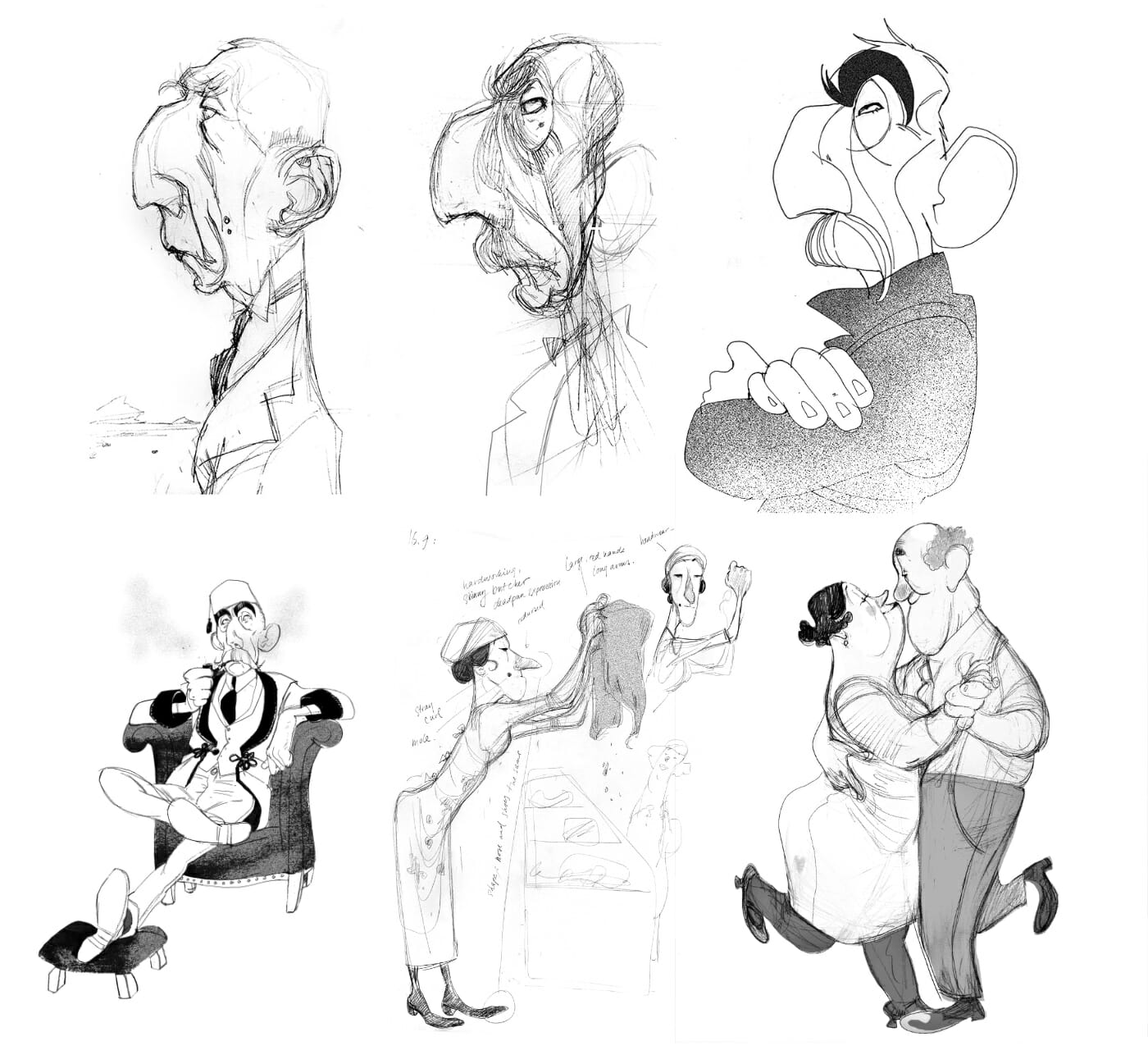
Much of the story is seen from Titina the dog’s eyes. How did you achieve the feeling of seeing the world through the dog’s perspective?
Tonje: There are quite a few scenes that take place from Titina’s eye height, where we are with her down on the floor witnessing the big men from her perspective. But more importantly, the perspective influenced the story itself.
We created scenes and storylines that had nothing to do with the men and their achievements, but where we drift off with Titina and experience her fascination with the landscapes and animals rather than the celebration of a planted flag.
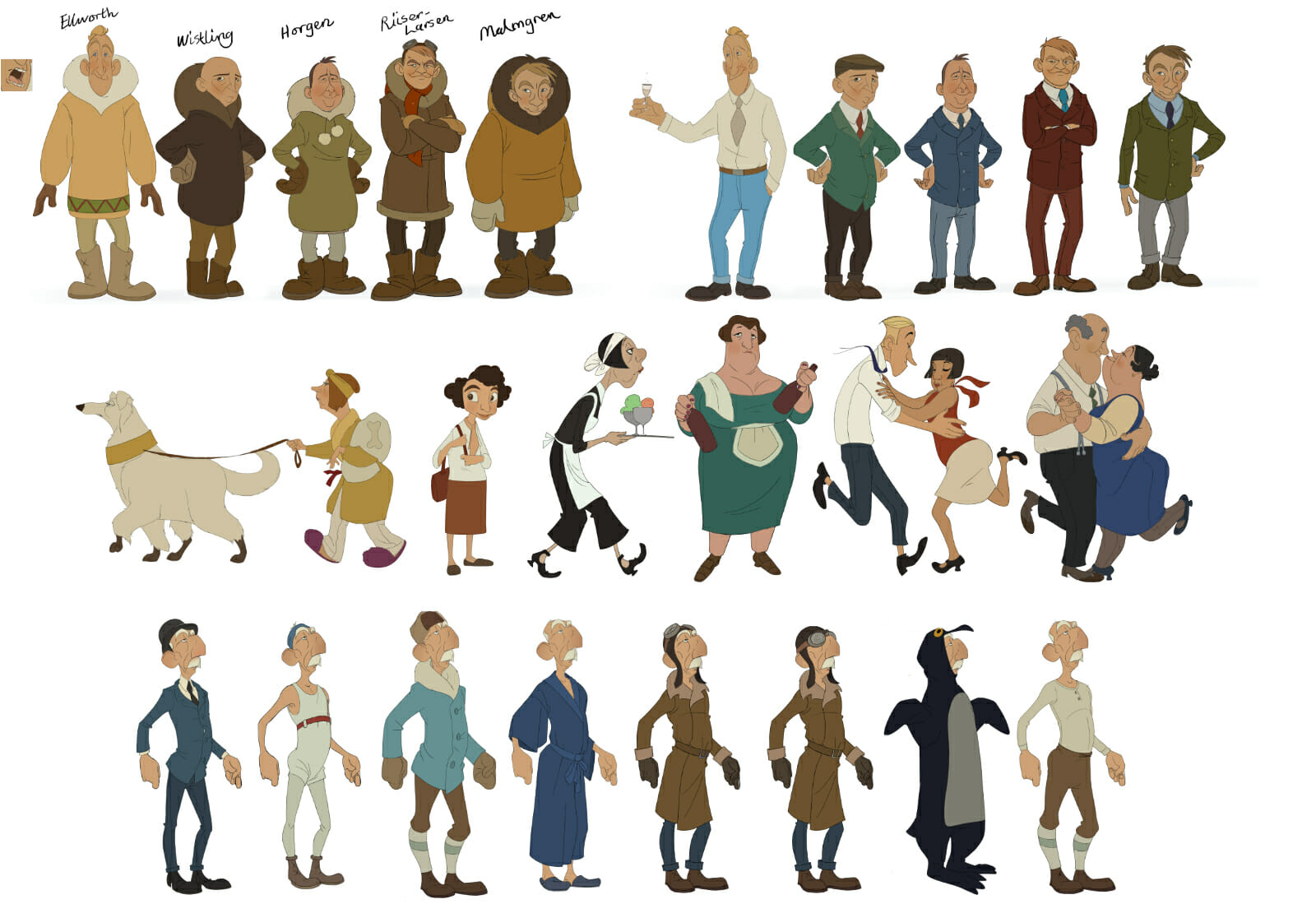
Can you share a little about the character design process?
Tonje: The first artist who was attached to the project was the Norwegian newspaper cartoonist Siri Dokken. Kajsa loves Siri’s style and line work. Siri is fun and irreverent, but always with a big heart for the little guy. She has very nice volumes and shapes in her drawings and, being a woman, she likes to draw women of all sizes and forms. There is so much personality in Siri’s characters, they don’t need to move that much to be interesting to look at. Again, Toon Boom Harmony was a perfect match for her line work.
However, Siri has never worked in animation before, so it took a lot of work to get her characters ready for animation. Norwegian character designers Sunniva Fluge Hole and Bulgarian Marta Andreeva did a wonderful job translating Siri’s sketches to animation-ready model sheets.
What was the biggest challenge you faced when creating Titina, and how was it overcome?
Tonje: The biggest challenge was the Covid pandemic. Immediately after we completed the pre-production in Norway, the whole world shut down. So, for the entire production time in Belgium – which spun over a year and a half – there were lockdown and travel restrictions.
Director Kajsa lived in Brussels during this time and had difficulties traveling home to see her husband and children. So that was a huge sacrifice. It also made it harder for us Norwegian producers to follow the production in Belgium and be by Kajsa’s side. But artistically, the film turned out beautiful, and we couldn’t be happier with the work done by Kajsa and the Belgian studios.
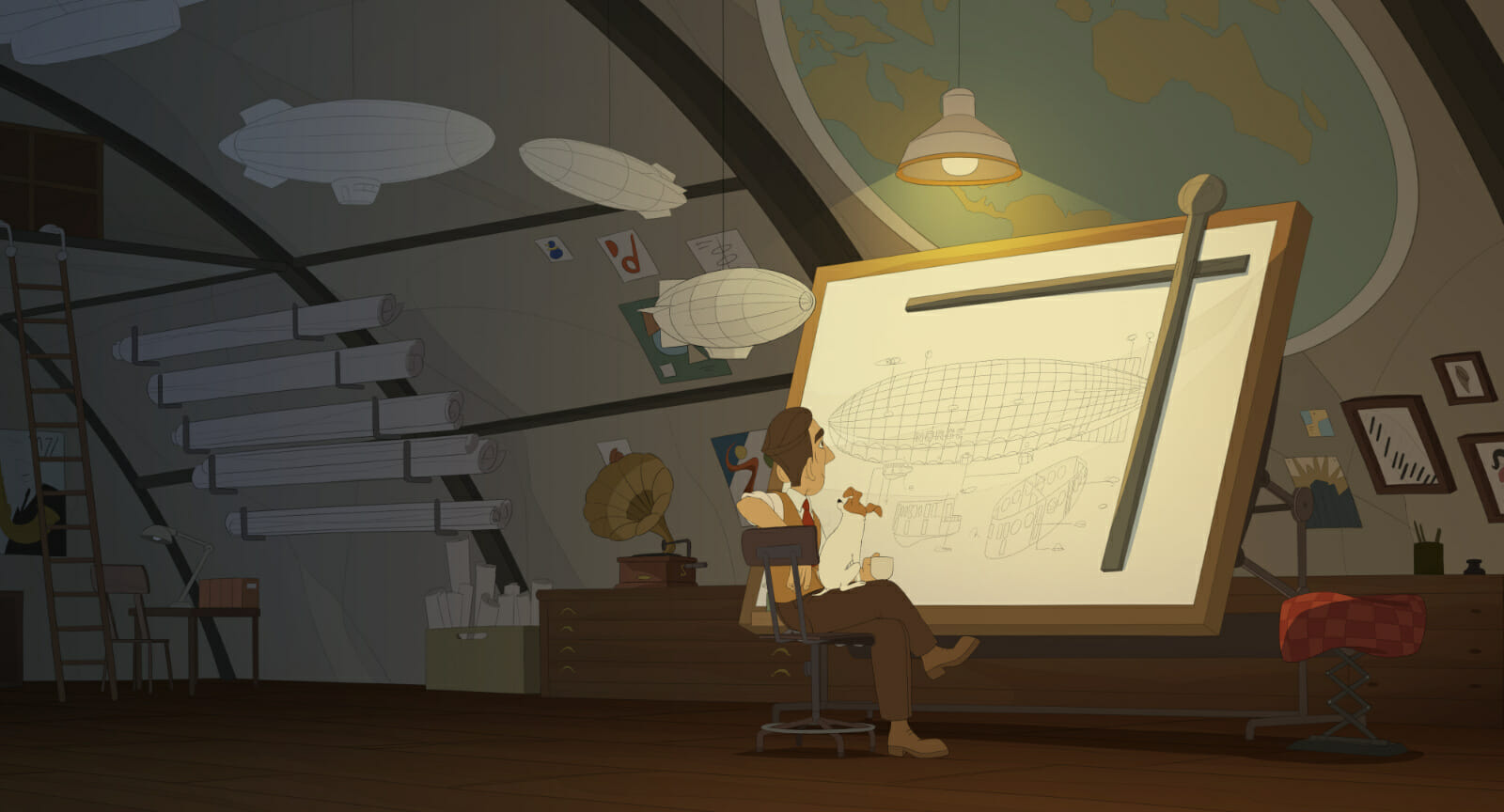
- Interested in experiencing Titina’s voyage for yourself? The animated feature film will be available to stream on The Animation Showcase on July 10.
- Ready to start your next animated project? Artists can download a fully featured 21-day trial of Toon Boom Harmony.

.png)
